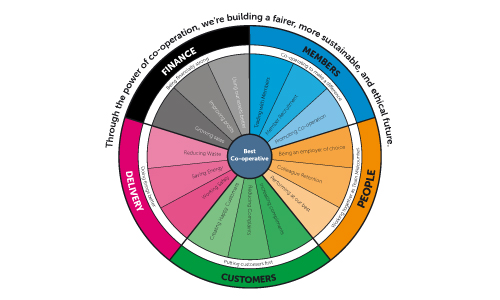Society Steering Wheel
On this page you can find out about:
- What is the Society Steering Wheel
- How is the Society Steering Wheel reported on?
- Full definitions for each area of the Society Steering Wheel
- Our targets for 2024/25 targets

What is the Society Steering Wheel?
As a co-operative, we believe there is more to being a successful business than just profits. So, as well as measuring our financial performance we use our Society Steering Wheel to measure our performance in the key areas of co-operation, people, customers and delivery.
How & When Is the Society Steering Wheel Reported On?
Each section of the wheel has a number of objectives which we monitor on a monthly basis. The sections are coloured red, amber or green to indicate whether they are below target (red), nearly on target (amber), or on or above target (green). All our sites have their own Steering Wheel targets. This ensures we are addressing our co-operative aims as a business on a continuous basis, right down to site level. Progression against these Steering Wheel targets is reported to our colleagues every period and is also reported to our members on a half-yearly basis through our Member Half Yearly Meetings and AGM.







